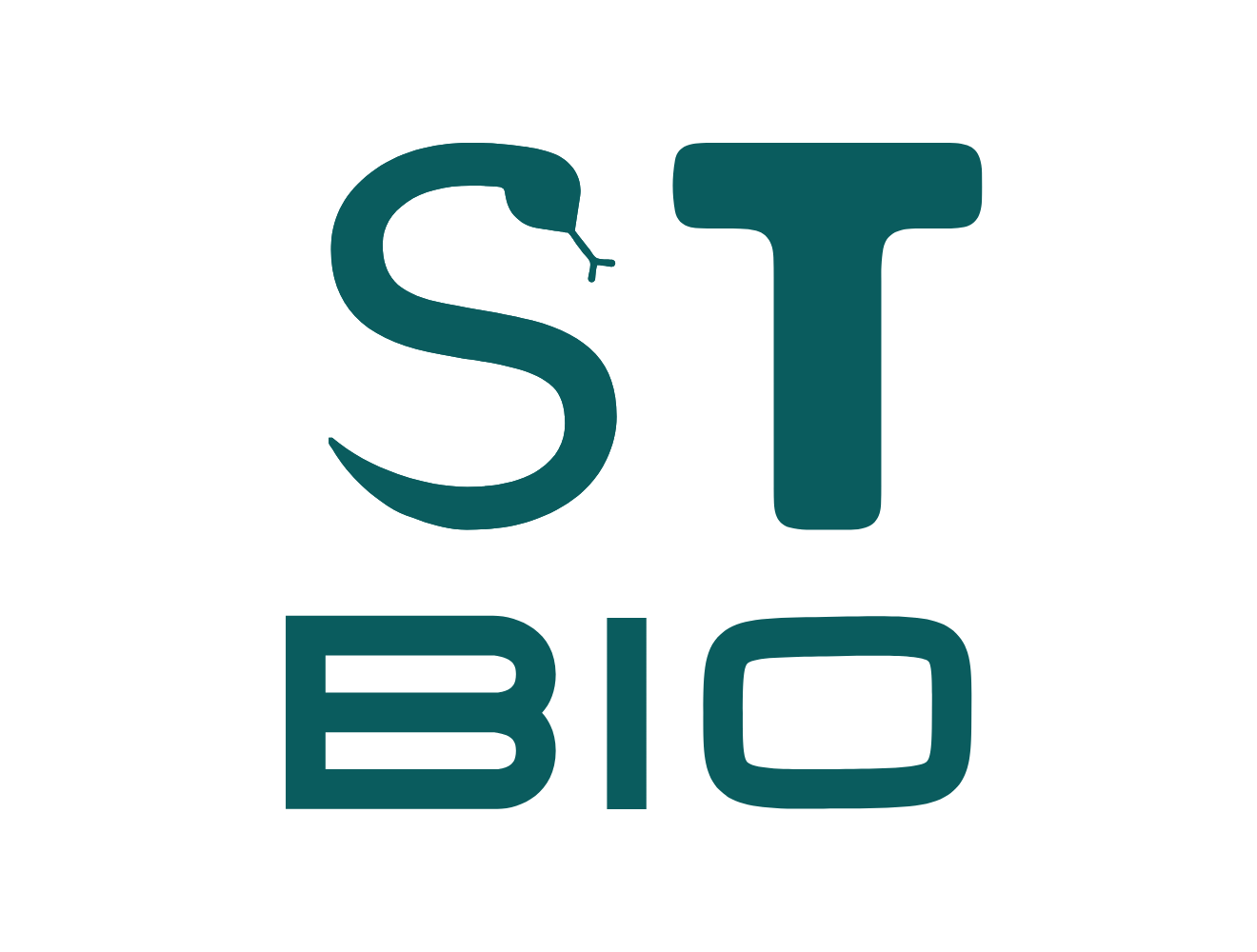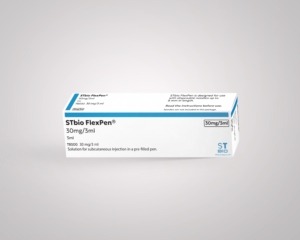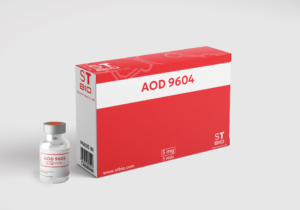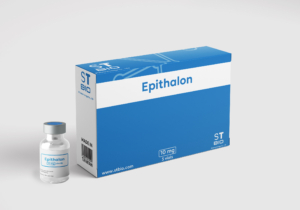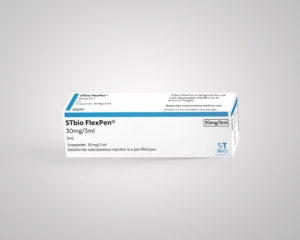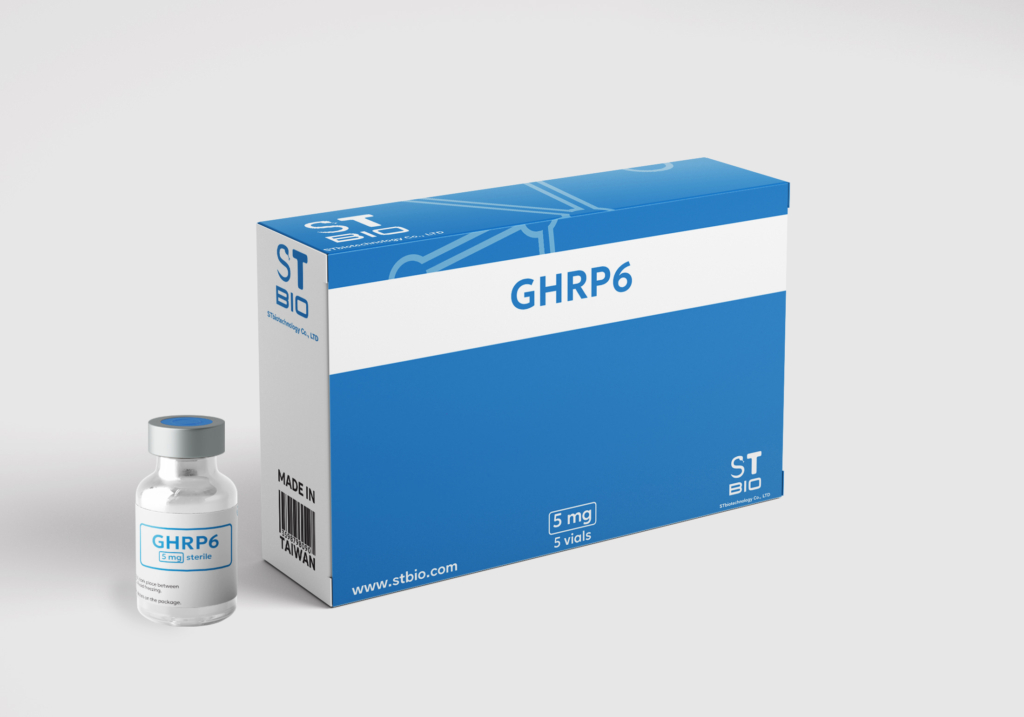
GHRP6
In 1982, scientists finally identified Growth Hormone Releasing Hormone (GHRH), a discovery that had been years in the making. Following this, researchers found that certain Growth Hormone Releasing Peptides (GHRPs), particularly GHRP-6 and GHRP-2, functioned through a different mechanism, binding to unique receptors not associated with GHRH. Additionally, studies revealed that these peptides worked synergistically with GHRH, a hormone related to Sermorelin, to significantly increase Growth Hormone (GH) release in both animals and humans. By the 1980s, the first potent GH-Releasing Peptide, GHRP-6, had been developed. Due to its ability to robustly stimulate GH production, it became the pioneering compound in a class known as Growth Hormone secretagogues. GHRP-6 is a hexapeptide made up of six amino acids: L-Histidine, D-Tryptophan, L-Alanine, L-Tryptophan, D-Phenylalanine, and L-Lysine. The «L» form of an amino acid refers to its naturally occurring configuration, while the «D» form, which is not naturally present, is its isomer, or mirror image. GHRP-6 (His-D-Trp-Ala-Trp-D-Phe-Lys-NH2) combines both natural and isomeric forms of these amino acids to trigger GH release while also inhibiting the action of somatostatin, a hormone that suppresses GH production.
GHRP-6 Research Findings
Scientific studies have shown that GHRP-6 can be even more effective than GHRH in promoting growth hormone release in primates, and when used together, the two peptides show an enhanced effect. This synergy has been observed with combinations like GHRP-2 and CJC-1295. Researchers suggest that GHRP-6 works on both the hypothalamus and pituitary gland (Fairhall et al. 1995). In experiments with rat pituitary cells, GHRP-6 was found to elicit its half-maximal and maximal GH release at concentrations of 7 x 10(-9) and 10(-7) M, respectively.
Another study concluded that the hypothalamus is the primary target of GHRP-6 in living organisms, including both animals and humans. Central administration of GHRP-6 in guinea pigs led to GH release, which was reduced when somatostatin was introduced. This study also suggested that GHRP-6 activates GRF neurons via specific receptors on or near the neurons, helping stimulate GH secretion through mechanisms not yet fully understood (Chan et al., 1989).
The effectiveness of GH release in response to GHRP-6 depends on the physical condition of the subject. For instance, GH secretion tends to decrease in individuals with obesity. Interestingly, research has shown that GHRP-6, similar to Hexarelin, elicited nearly double the GH response in obese subjects compared to non-obese ones (Cordido et al., 1993). Furthermore, GHRP-6’s effects appear to be independent of sex and age and are not influenced by the adrenergic pathways involving a2 adrenergic receptors (Penalva et al., 2008).
GHRP-6 and the Growth Hormone Secretagogue Receptor
Unlike GHRH, GHRP-6 works by stimulating a newly discovered receptor known as the Growth Hormone Secretagogue Receptor (GHS-R). Later, researchers identified ghrelin as the body’s natural ligand that binds to GHS-R. Both ghrelin and synthetic peptides like GHRP-6 are classified as Growth Hormone Secretagogues (GHS). One of the notable effects of GHRP-6 is a marked increase in appetite due to its ability to stimulate ghrelin release. Ghrelin, a peptide produced in the stomach lining, enhances hunger and accelerates gastric emptying. Additionally, GHRP-6 stimulates the anterior pituitary gland, resulting in increased growth hormone production. The elevated GH levels can lead to the liver releasing insulin-like growth factor 1 (IGF-1), which enhances the body’s ability to build muscle and burn fat. Since GHRP-6 impacts the feedback loop that regulates GH inhibition, it has the potential to reinvigorate natural GH production.
